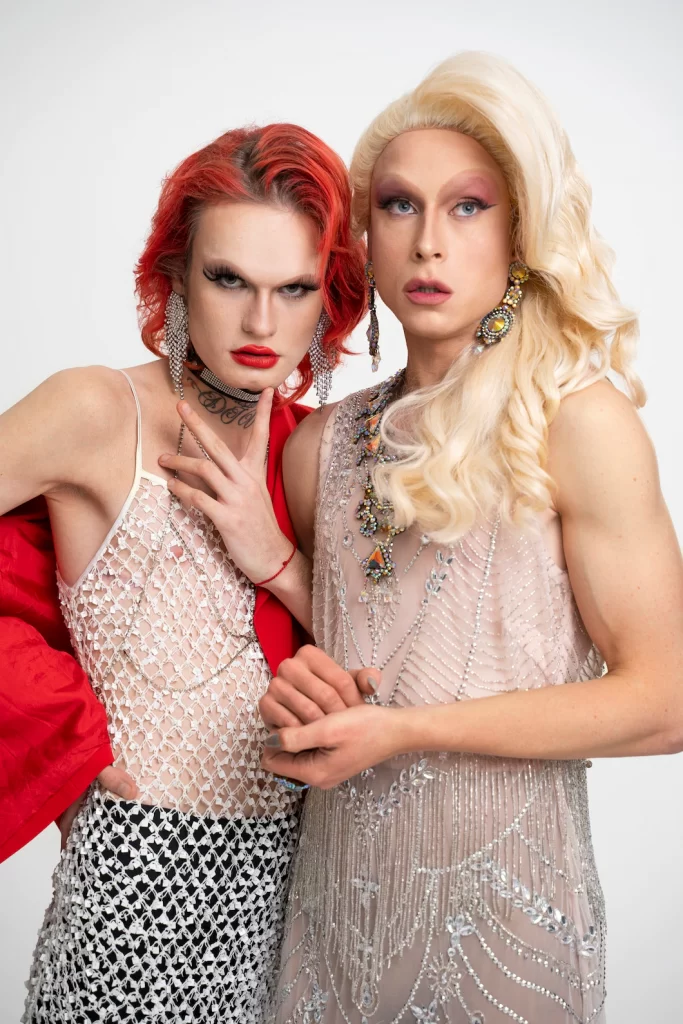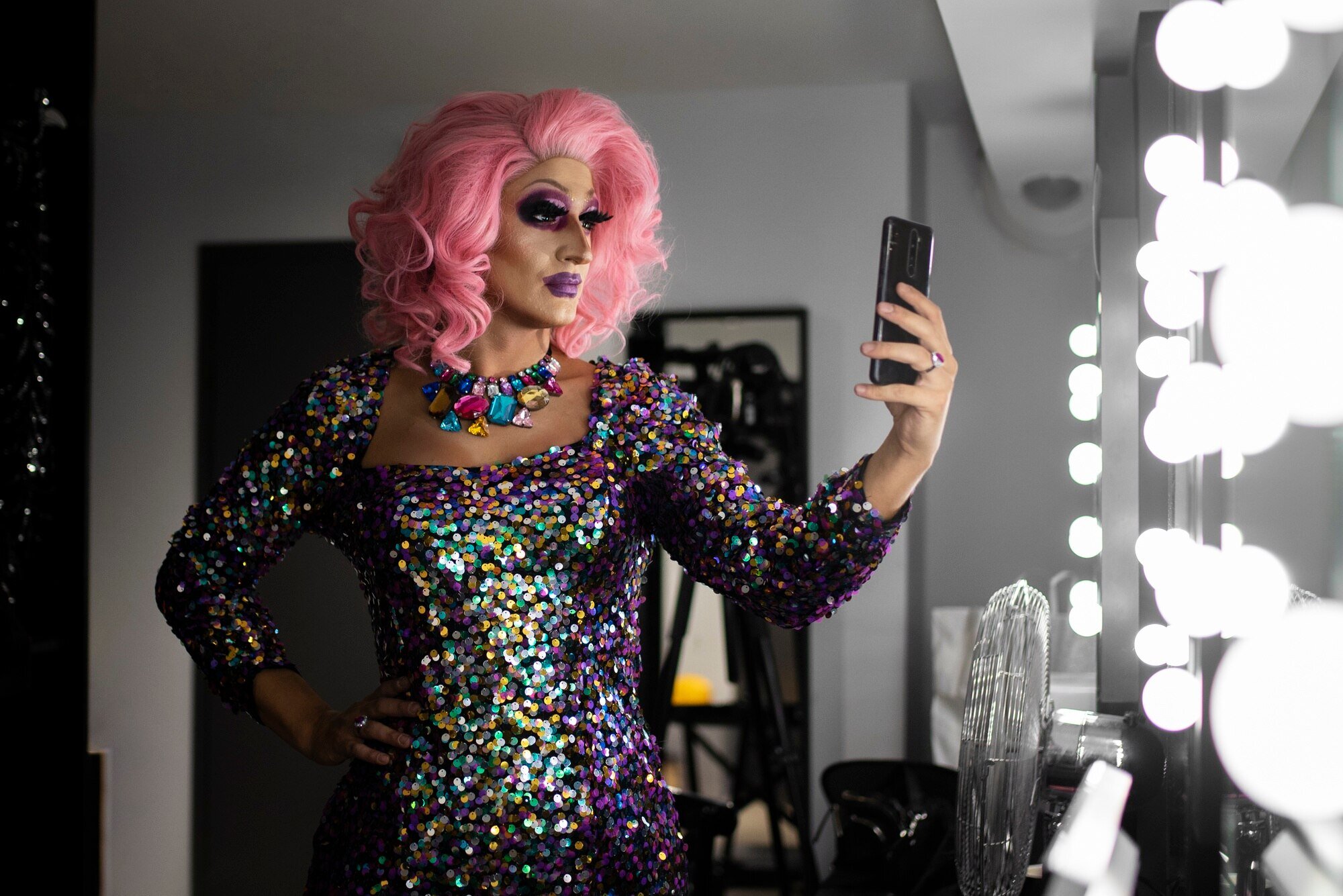Drag queens have become an iconic and beloved part of LGBTQ+ culture. With their flamboyant costumes, dramatic makeup, and larger-than-life personalities, drag queens have captivated audiences around the world. But what exactly is a drag queen, and where did this vibrant subculture come from? In this article, we will take a deep dive into the world of drag queens, exploring the history, artistry, and cultural significance of this fascinating phenomenon.
Section 1: What is a Drag Queen?
A drag queen is a performer, typically a man, who dresses in exaggerated feminine attire and makeup as part of a performance. Drag queens often lip sync to music or perform comedy routines, and their performances can be found in a variety of settings, from nightclubs to pride parades.
It’s important to note that not all drag queens are gay or transgender. While drag is often associated with the LGBTQ+ community, anyone can be a drag performer regardless of their sexual orientation or gender identity.
Section 2: The Artistry of Drag
While drag is often associated with over-the-top costumes and makeup, there is a true artistry to drag performance. Drag queens often spend hours perfecting their looks, from sewing their own costumes to applying intricate makeup.
In addition to the visual aspects of drag, there is also a performance element. Drag queens often lip sync to popular songs, but they also incorporate comedy, dance, and storytelling into their acts.
Drag performers also have their own unique language and culture. For example, many drag queens use “she” and “her” pronouns when in drag, and they often have drag names that are different from their given names.
Section 3: The Cultural Significance of Drag
Drag has become an important part of LGBTQ+ culture and has played a role in the fight for LGBTQ+ rights. Drag shows were often one of the only places where LGBTQ+ individuals could express themselves freely and find a sense of community.
Today, drag continues to be an important form of self-expression and representation for the LGBTQ+ community. Drag queens have become symbols of resilience, creativity, and pride, and they continue to inspire and uplift audiences around the world.
Section 4: Famous Drag Queens Throughout History
Throughout history, there have been many famous drag queens who have made an impact on pop culture and society as a whole. Some notable examples include:
- Divine: The drag performer and actor was known for his outrageous costumes and appearances in John Waters’ films.
- RuPaul: The drag queen and TV personality has become a household name thanks to his hit show RuPaul’s Drag Race.
- Lady Bunny: The drag queen and DJ has been a fixture in the New York City drag scene for decades.
- Marsha P. Johnson: The drag performer and activist played a key role in the Stonewall riots and was a prominent figure in the LGBTQ+ rights movement.
Section 5: Conclusion
- In conclusion, drag queens are a vibrant and beloved part of LGBTQ culture. They have a rich history and a powerful cultural significance that cannot be denied. From their origins in vaudeville to their place in modern-day entertainment, drag queens have captured the hearts and imaginations of audiences around the world.
But drag is more than just entertainment – it’s a form of self-expression and resistance. Drag performers have often used their art to push back against societal norms and expectations, particularly around gender and sexuality. Drag queens have provided a safe space for LGBTQ+ individuals to express themselves freely and to find community and support.
Today, drag culture continues to thrive, with new performers emerging all the time and more and more people becoming fans of the art form. Drag queens have become celebrities in their own right, and drag shows have become a popular form of entertainment for people of all backgrounds.
Ultimately, the world of drag is a celebration of diversity and creativity. It is a testament to the power of self-expression and the importance of embracing who we truly are. Whether you are a fan of drag or just discovering it for the first time, there is no denying the impact that drag queens have had on popular culture and on the LGBTQ+ community as a whole.

The History and Impact of Drag Queens: From Vaudeville to Mainstream Pop Culture
Drag queens have a rich and fascinating history that spans decades. From their roots in underground LGBTQ+ culture to their current mainstream popularity, drag queens have captivated audiences around the world. In this article, we will explore the history of drag queens, from their early days in vaudeville to their current status as icons of LGBTQ+ culture.
Early Days of Drag Queens:
Drag queens have been around for centuries, with evidence of men dressing in women’s clothing dating back to ancient civilizations. However, it was not until the late 1800s that drag queens began to gain prominence in Western culture. At this time, drag shows were popular in vaudeville theaters and burlesque houses, where men would dress up as women and perform comedy routines, song and dance numbers, and even dramatic monologues.
One of the most famous drag queens of this era was Julian Eltinge, who began performing in drag in the early 1900s. Eltinge was known for his glamorous costumes, impeccable makeup, and convincing portrayals of female characters. He even had his own Broadway show, “The Fascinating Widow,” which ran for over a year and made him one of the highest-paid performers of his time.
The Golden Age of Drag Queens:
The 1950s and 1960s were a golden age for drag queens, with many performers gaining widespread recognition and acclaim. One of the most famous drag queens of this era was Divine, who rose to fame in the 1970s through her collaborations with filmmaker John Waters. Divine was known for her outrageous and boundary-pushing performances, which often involved eating disgusting objects, performing shocking stunts, and generally defying societal norms.
Another drag queen who gained prominence in the 1960s was Flawless Sabrina, who organized a series of drag beauty pageants known as the “National Queen Beauty Contest.” These pageants were a way for drag queens to showcase their talent and beauty, and they helped to elevate drag culture to a new level of mainstream acceptance.
Drag and LGBTQ+ Rights:
Throughout the 20th century, drag queens played an important role in the fight for LGBTQ+ rights. In the 1960s and 1970s, drag queens were a fixture at gay rights protests and marches, using their art to push back against societal norms and demand equal rights and protections for LGBTQ+ individuals.
One of the most famous instances of drag queens using their art for political activism was the Stonewall riots in 1969. After police raided the Stonewall Inn, a gay bar in New York City, drag queens and other LGBTQ+ individuals fought back against the police and sparked a series of protests that are now considered a turning point in the fight for LGBTQ+ rights.
Drag Queens Today:
Today, drag queens continue to be an important part of LGBTQ+ culture, with many performers gaining widespread fame and recognition. One of the most famous drag queens of the modern era is RuPaul, who rose to fame in the 1990s and has since become a mainstream celebrity, hosting his own reality show, “RuPaul’s Drag Race.”
RuPaul’s Drag Race has helped to bring drag culture to a wider audience and has even helped to launch the careers of many new drag performers. The show has also been praised for its inclusive approach to gender and sexuality, with many of its contestants identifying as non-binary or gender non-conforming.
Conclusion:
The history of drag queens is a long and fascinating one, with many performers using their art to push back against societal norms and demand equal rights and protections for LGBTQ+ individuals. Today, drag queens continue to be an important part of LGBTQ+ culture, and their art continues to inspire and captivate audiences around the world. Whether you are a longtime fan of drag or just discovering it for the first time, there is no denying the impact that drag queens have had on popular culture and the broader fight for equality and acceptance.
As we look to the future, it is clear that drag queens will continue to play an important role in the LGBTQ+ community and beyond. With more visibility and acceptance than ever before, drag culture is poised to continue to evolve and inspire, pushing the boundaries of what is possible and challenging us all to be more accepting and inclusive of all people, regardless of their gender identity or expression.
So the next time you see a drag queen performing on stage or on television, take a moment to appreciate the rich history and culture that they represent. From their humble beginnings in vaudeville and burlesque to their current status as icons of LGBTQ+ culture, drag queens have come a long way, and their influence will continue to be felt for generations to come.
Share this article
